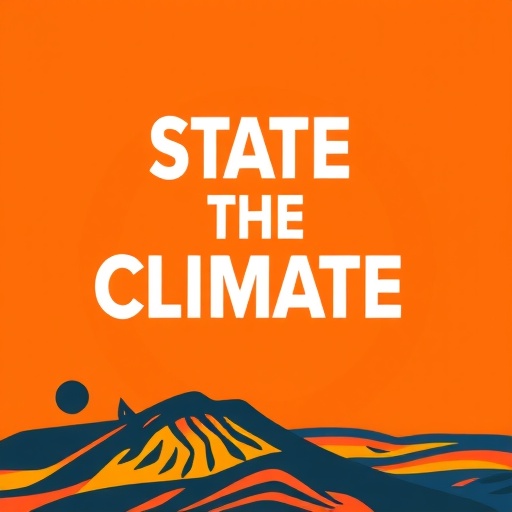A startling new scientific report released in the journal BioScience lays bare the accelerating severity of Earth’s climate crisis, revealing that 22 out of 34 critical planetary vital signs have now reached record-breaking levels. This comprehensive analysis underscores the fact that our planet is hurtling ever closer to what experts describe as “climate chaos,” driven by a complex convergence of anthropogenic pressures and environmental feedback loops. Spearheaded by Dr. William J. Ripple from Oregon State University alongside Dr. Christopher Wolf of Terrestrial Ecosystems Research Associates, the study offers an expansive examination of climate indicators and the dire implications of continued inaction.
The study meticulously tracks a suite of vital signs that collectively portray Earth’s climatic health. These measures include variables intrinsically tied to human activity, such as global energy consumption trends and greenhouse gas concentrations, alongside climate system responses like rising global surface temperatures, shrinking polar ice sheets, and changes in oceanic conditions including sea surface temperatures and acidification. The analysis extends to extreme weather phenomena and ecosystem disruptions, providing an integrated overview of the multifaceted dimensions contributing to global warming.
Building upon a framework initially established in 2020 by the same research group, the authors leverage updated datasets to affirm that 2024 registered as the hottest year on record worldwide—a clear indicator of rapidly escalating climate instability. This milestone exemplifies a pattern of unprecedented warming rates exacerbated by a complex interplay of human-induced emissions and natural variability. The 2025 data further reveal alarming trends, with atmospheric CO2 levels reaching new highs, partially driven by diminished carbon sequestration on terrestrial landscapes, a process intensified by El Niño events and widespread forest fires.
The report articulates the heightened risk of reaching tipping points within Earth’s climate system, where self-perpetuating feedback mechanisms may accelerate warming in an uncontrollable manner. For instance, declining Arctic sea ice reduces planetary albedo, amplifying heat absorption, while thawing permafrost releases methane, a potent greenhouse gas. The researchers warn that these processes are converging to propel the planet toward a “hothouse Earth” scenario, one in which climate impacts destabilize social and ecological systems worldwide.
One of the gravest potential disruptions highlighted is the collapse of the Atlantic Meridional Overturning Circulation (AMOC), a critical component of the global ocean conveyor belt. The AMOC regulates heat distribution across hemispheres and parts of it function as a climatic thermostat. Its potential breakdown could unleash abrupt and irreversible regional climate shifts, triggering intensified droughts, catastrophic floods, and tremendous declines in agricultural productivity, particularly in regions heavily dependent on stable climatic patterns for food security, such as parts of Africa, Europe, and the Americas.
Despite the bleak outlook, the authors emphasize the availability of robust, cost-effective mitigation pathways that could still arrest or slow down the trajectory toward catastrophic outcomes. Among these strategies are aggressive forest conservation programs, expanded deployment of renewable energy technologies, and widespread adoption of diets emphasizing plant-based foods. Additionally, addressing food loss and waste—responsible for nearly 10% of global emissions—and restoring degraded ecosystems like wetlands, peatlands, and mangroves are critical leverages to sequester carbon naturally.
Economic analyses embedded in the report underscore that investment in climate mitigation is vastly outweighed by the financial burden of climate-induced damages projected over the coming decades. This cost disparity amplifies the moral and pragmatic imperatives for governments and private sectors to accelerate policy reforms and funding towards sustainable development, fostering a just transition that equitably addresses vulnerabilities within marginalized communities disproportionately impacted by climate change.
Moreover, the study highlights the transformative potential of social tipping points—collective shifts in public behavior and policy driven by sustained, peaceful movements. Even relatively small groups can catalyze widespread societal change, altering public norms, influencing legislation, and breaking political deadlocks. This phenomenon underscores the critical importance of public engagement and awareness, especially given the paradox that although most individuals support strong climate action, many mistakenly believe their views are in the minority, dampening collective momentum.
The authors frame climate change fundamentally as an issue of environmental justice. Vulnerable and marginalized populations, despite contributing least to global emissions, face the most severe consequences. This disparity demands urgent and equitable responses encompassing adaptation assistance, inclusive policy-making, and international cooperation to manage displacement, food insecurity, and health crises triggered by a volatile climate.
In concluding, the report is a clarion call emphasizing that the decisions we make today, through policy frameworks, economic commitments, and community initiatives, will indelibly shape Earth’s climate future. The trajectory remains mutable, contingent upon urgent, bold, and concerted global action. Failure to act decisively risks initiating cascade effects that could push planetary systems beyond repair, while proactive engagement offers a pathway to stabilization and sustainability.
This extensive climate assessment serves both as a scientific indictment of current trajectories and an ethical appeal urging society to marshal the full extent of human ingenuity and resolve. Given the fast-paced progression of destabilizing trends documented, delay in response not only magnifies risks but also narrows the window of feasible solutions. The study thereby stresses the imperative of immediate, multifaceted efforts to mitigate emissions, restore natural systems, and empower collective societal transformation.
The full detailed analysis and expanded datasheets accompanying this report are accessible in the latest edition of BioScience, providing a crucial resource for policymakers, scientists, and the public seeking to understand the stark realities and possible remedies of today’s climate crisis.
Subject of Research: Planetary vital signs and climate crisis acceleration
Article Title: The 2025 state of the climate report: a planet on the brink
News Publication Date: 29-Oct-2025
Web References: http://dx.doi.org/10.1093/biosci/biaf149
Image Credits: USCG Heartland
Keywords: Climate crisis, planetary vital signs, global warming, greenhouse gases, climate tipping points, Atlantic Meridional Overturning Circulation, mitigation strategies, environmental justice, carbon emissions, ecosystem restoration, social tipping points




